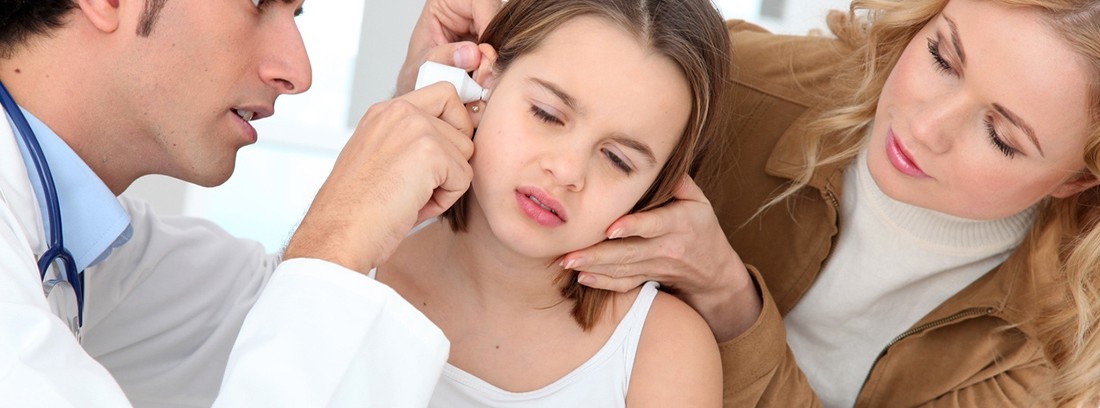Otitis externa and media
 | Otitis externa is the inflammation of the EAC (external auditory canal), it is the outermost part of the ear that begins in the pinna and ends in the eardrum.
| Otitis externa is the inflammation of the EAC (external auditory canal), it is the outermost part of the ear that begins in the pinna and ends in the eardrum.
External otitis
The causes that produce external otitis are mainly two: irritant and infectious.
It is a typical summer disease, when children go to the pool. Moisture maintained in the external auditory canal favors infection. Repeated scratching with the finger or other objects can cause EAC irritation and subsequent infection.
The most frequent symptoms are pain in the area of the ear that becomes very intense, it can be accompanied by itching and a greenish-yellow discharge that comes out of the EAC. In external otitis the child does not have a fever.
The treatment is analgesics to control pain and inflammation, clean the secretions from the ear with a wet gauze and the Pediatrician will assess the administration of antibiotic drops
To prevent external otitis, it is advisable to dry the pinna well. If the child frequently suffers from external otitis, it is advisable to protect the ears with plugs to go to the pool.
Otitis media
It is the inflammation of the middle ear. It is the most common infection in childhood after the cold. The middle ear is located between the eardrum and the inner ear. In the middle ear are the "ossicles" hammer, anvil and stapes that are responsible for transmitting the sound that reaches the eardrum.
The middle ear communicates with the throat through a tube called the Eustachian tube. This structure facilitates the aeration of the ear and the emptying of the secretions that are produced in this part of the ear.
There are two types of otitis media:
- Acute otitis media (AOM): is the inflammation and acute infection of the middle ear that usually presents as a complication of a cold. The most frequent symptoms in children are fever and earache. The smaller the child is, the less striking are the local symptoms (earache) and the more frequent the general symptoms (fever, vomiting, irritability ...). At first, the accumulation of pus in the middle ear and the bulging of the eardrum produce intense pain, when the eardrum is perforated and releases the accumulated secretions it stops hurting and a yellowish and bloody fluid can be seen coming out of the external auditory canal. .
Treatment is pain relievers to control pain and inflammation and frequent nasal washes. The Pediatrician will assess whether or not antibiotics are necessary. Avoid wetting the child's ears for several days and do not administer drops or oil inside the ear.
Complications from AOM are not very common. It is necessary to go to the Pediatrician if the child has a very intense headache and vomiting, a very high fever and swelling, redness or pain in the back of the ear. The latter may indicate a possible mastoiditis, an infection of the mastoid that requires intravenous antibiotic treatment.
- Serous otitis media: is the accumulation of fluid or mucus in the middle ear. It occurs frequently in children who suffer from recurrent AOMs and who do not properly empty the secretions from the middle ear through the Eustachian tubes. It is a very common disease in children and requires the monitoring of the Pediatrician and Otolaryngologist. The child has no fever or pain. Hearing loss can sometimes occur due to the accumulation of mucus in the middle ear that hinders the transmission of sound. Treatment is symptomatic and, in many cases, a small surgery is necessary to place drains (tubes that cross the eardrum and drain the mucus).
(Updated at Apr 14 / 2024)